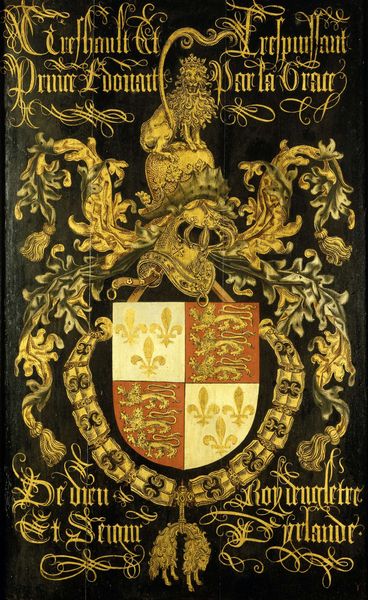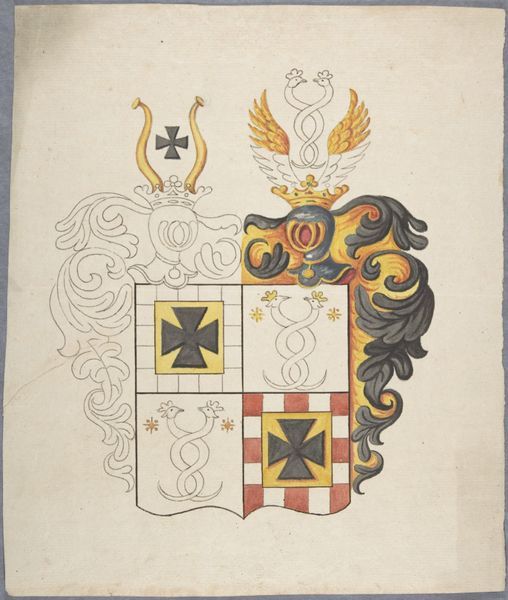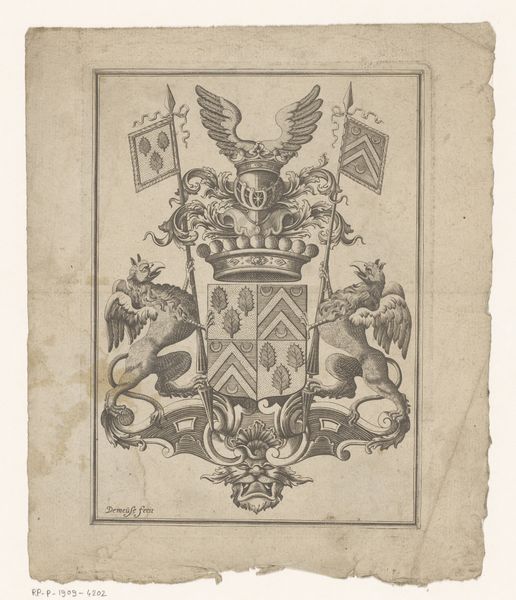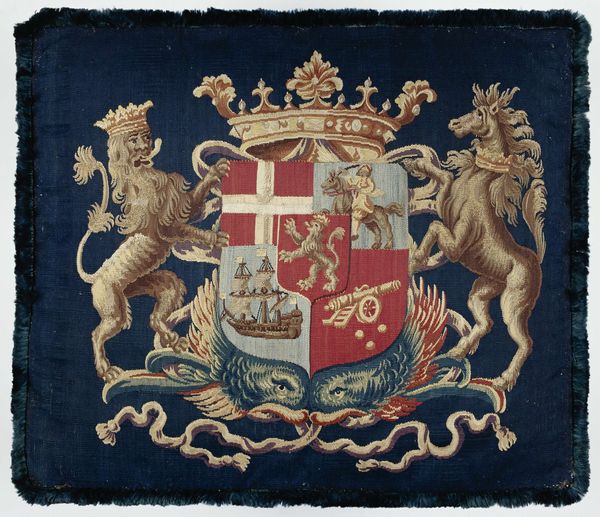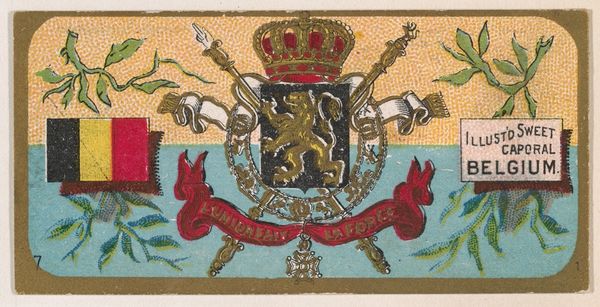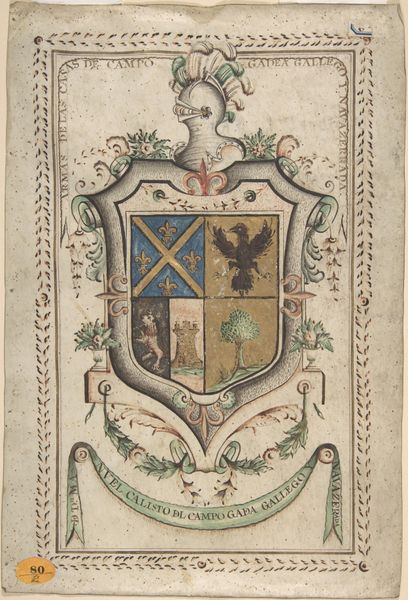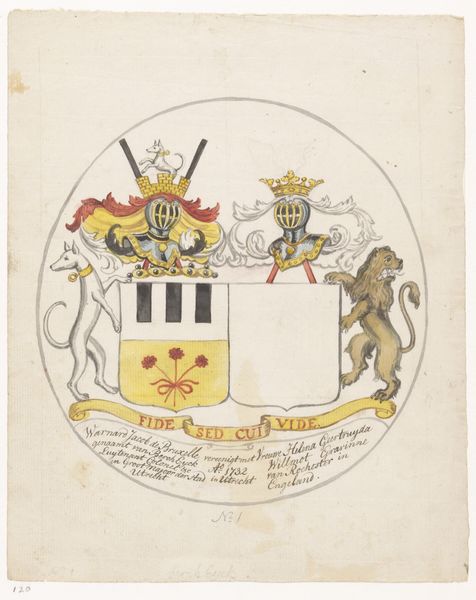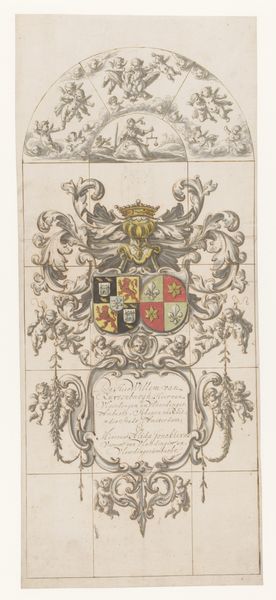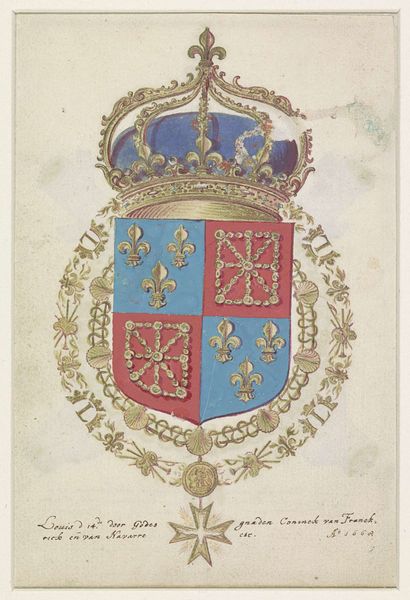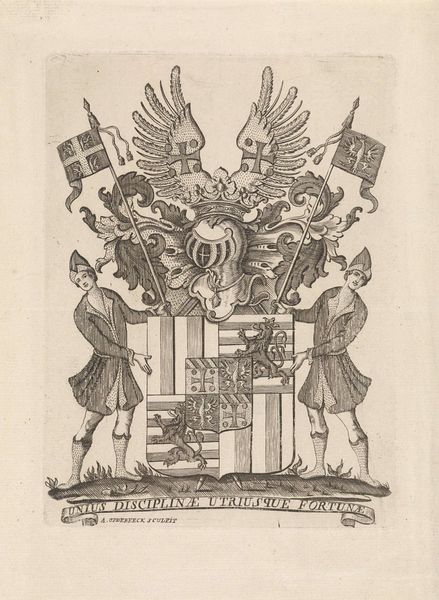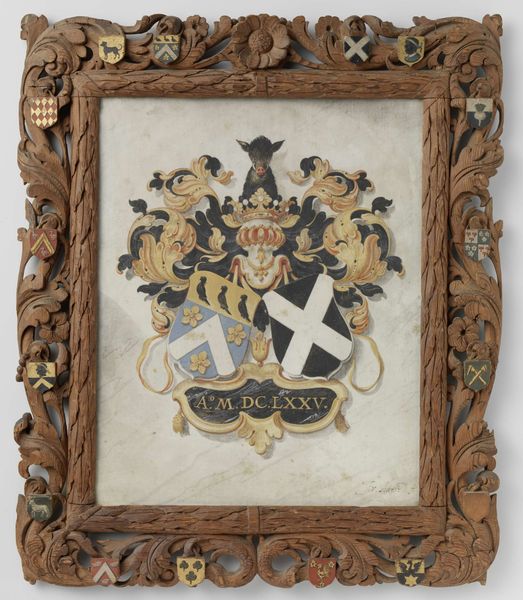
drawing, paper, watercolor
#
portrait
#
drawing
#
water colours
#
paper
#
watercolor
#
coloured pencil
#
history-painting
Dimensions: 11 3/4 x 9 in. (29.85 x 22.86 cm) (sheet)
Copyright: Public Domain
Curator: Here we have "Crest - Name of Beckett," a watercolor and coloured pencil drawing on paper, made around 1790. The work is currently held here at the Minneapolis Institute of Art. Editor: My first thought is how wonderfully decorative and symbolically rich this crest appears. You instantly get a sense of lineage and the importance of heritage through visual representation. It feels very stately. Curator: Indeed. Crests like these, beyond simply representing a family's identity, are like compressed narratives. In a sense, it becomes a public proclamation about who they are, what values they uphold, and even, sometimes, a shorthand for their history. Note the bundles of wheat in the main shield, for example. Editor: Right, I see the wheat! It suggests prosperity, abundance, maybe even ties to agriculture and the land. The imagery creates these immediate links to cultural values that remain relevant and consistent over time. Curator: Precisely! And then there are the two avian figures that flank the crest—likely mythical beasts, serving as guardians. They add to the aura of importance, suggesting not just wealth but also perhaps the need to defend their legacy, to have strength. Editor: It's fascinating how visual symbols crystallize meaning in such efficient ways. Each element seems to be a calculated part of a message meant to communicate status. How were these designs decided upon, back in the day? Curator: Great question! Guilds of heraldic artists existed. Designing these crests would involve intricate negotiations with families—to properly display status but also reflect the family’s history, achievements and affiliations, and any alliances they wished to publicly show through those symbols. Editor: So the image itself becomes part of history as it records political dynamics? I am left wondering how many people actually knew what these images meant to communicate at a time where images were nowhere near as widespread as they are today. Curator: An intriguing consideration! These crests likely circulated among a more literate class. In essence, it's less about mass communication and more about signaling among a certain segment of society. Now I’m curious to investigate which parts of these emblems remained recognizable through wider cultural memory… Editor: Yes, an excellent angle. And what better symbol than one meant to remind an entire clan of their combined identity?
Comments
No comments
Be the first to comment and join the conversation on the ultimate creative platform.


